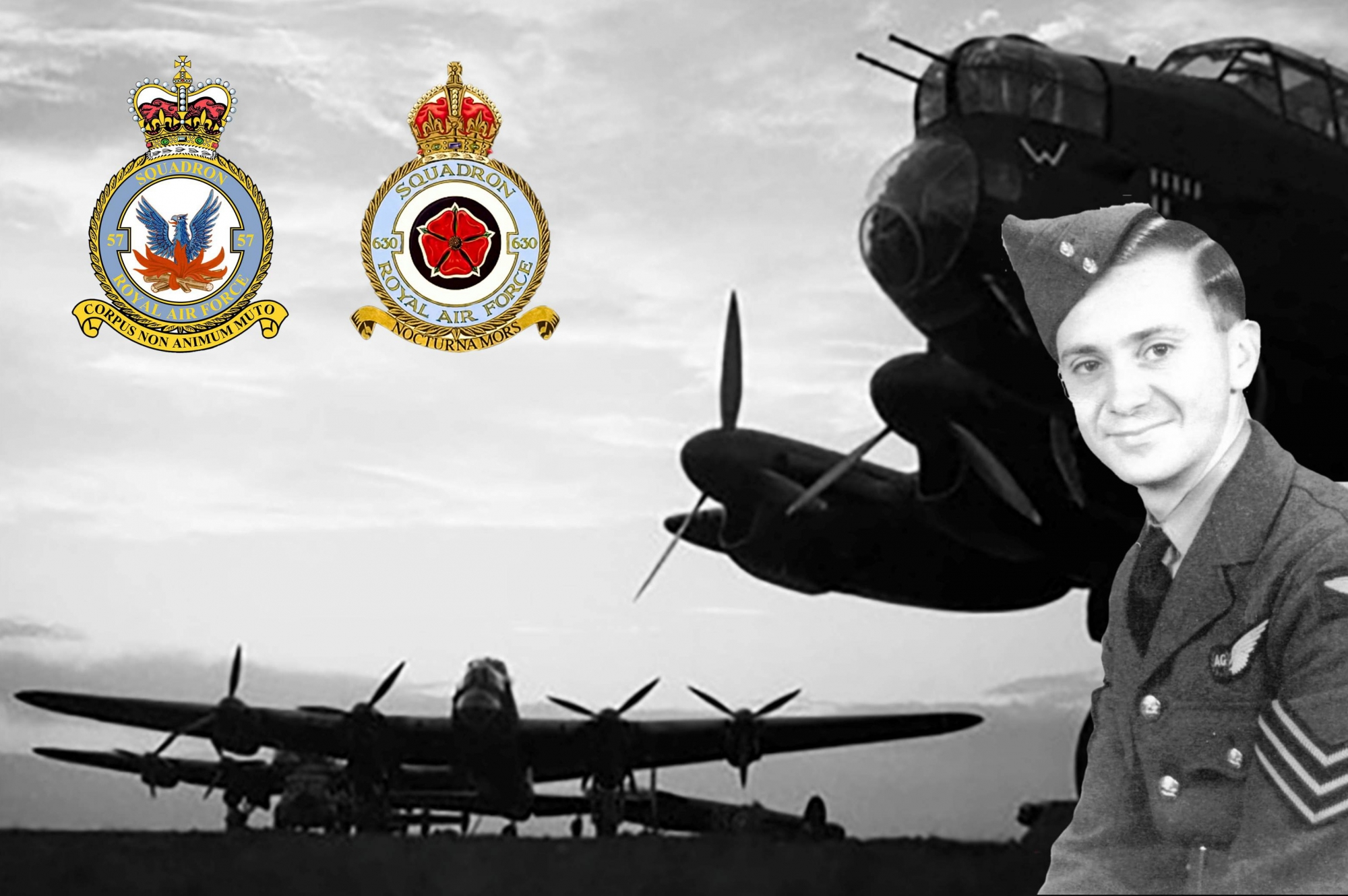Members Remember: Flying Officer Ken Crawley – Lancaster wireless operator
Header Image: Lancasters of 57 Sqn at RAF Scampton, Ken Crawley (inset) served as a wireless operator with 57 and 630 Sqns at Scampton and East Kirkby.
Continuing the ‘Members Remember’ series, in which we offer Club members the opportunity to tell the stories of any relatives who served with the RAF during the Second World War, here we have the story of Lancaster wireless operator, Flying Officer Ken Crawley, father of Club member Bob Crawley, and also Ken’s wife, Bob’s mother, ex-WAAF Lilian “Lilly” Crawley.
Bob emailed the Club, writing: “I thought you may be interested to hear why I am, and will continue to be a member of the RAF Memorial Flight Club. It is for my mother and father. My father was a Flying Officer in the RAF seeing active service in Lancasters in the Second World War with 57 Squadron at Scampton and East Kirkby and with 630 Squadron at East Kirkby. My mother was a sergeant in the WAAF during the war and, amongst other things, was in charge of Barrage Balloon Site 20 in Wandsworth, London. I mention this because I am lucky enough to say they are still both alive. Dad celebrates his 102nd birthday in May and Mum her 100th in December. A particularly memorable date occurs on 8th April this year when they celebrate their 79th wedding anniversary. They have ten children (of which I am number five), 28 grandchildren, 28 great grandchildren and two great, great grandchildren.”

Ken Crawley trained as an air gunner and wireless operator, but spent the majority of his operational time as a wireless operator in Lancasters. His logbook shows that he completed a total of 27 bomber ‘ops’ from June 1943 to January 1944. Ken flew as part of the crew captained by Canadian Pilot Officer John Pratt RCAF. Initially, the crew was with 57 Squadron at RAF Scampton until August 1943 when the unit moved to East Kirkby. On 15th November 1943, 630 Squadron was formed at East Kirkby from ‘B’ Flight of 57 Squadron and the Pratt crew joined the newly formed squadron to complete their tour of bombing operations. This coincided with the so-called ‘Battle of Berlin’ and the nine missions that Ken and his crew flew with 630 Squadron to complete their tour were all to the highly-dangerous target of Berlin, the “Big City”. With 630 Squadron they mostly flew in Lancaster B.III JB556 ‘LE-Y’. There is no doubt that Ken and his crew were lucky to survive. When their tour was over, the pilot, John Pratt, the navigator, Tom Smart, and the bomb aimer, Tony Blois, were each awarded the DFC.

Ken’s wife Lilly served with the WAAF during the war, initially as a driver before she was transferred to Barrage Balloon Site 20 in Wandsworth, London, now as a corporal. Later she was a driver for senior RAF officers. Lily relates the amusing story of how, during an air raid, shrapnel severed the cable of the barrage balloon and it blew into nearby Wandsworth Prison. She had to lead a team to knock on the door of the prison to "ask for their balloon back"! Lilly’s barrage balloon team used to have annual reunions for many years until their numbers dwindled.

We are sure that all Club members will join us in wishing Ken and Lilly a very happy 79th wedding anniversary on 8th April.
Thank you to Bob for telling us of his father’s and mother’s wartime stories. If any Club member would like to submit a story about a relative who served with the RAF during the Second World War for the ‘Members Remember’ series, we would be pleased to receive it. The only proviso for a story to be published in the Club newsletters is that we must have at least one photograph of the person in wartime to illustrate it. Simply email [email protected]







